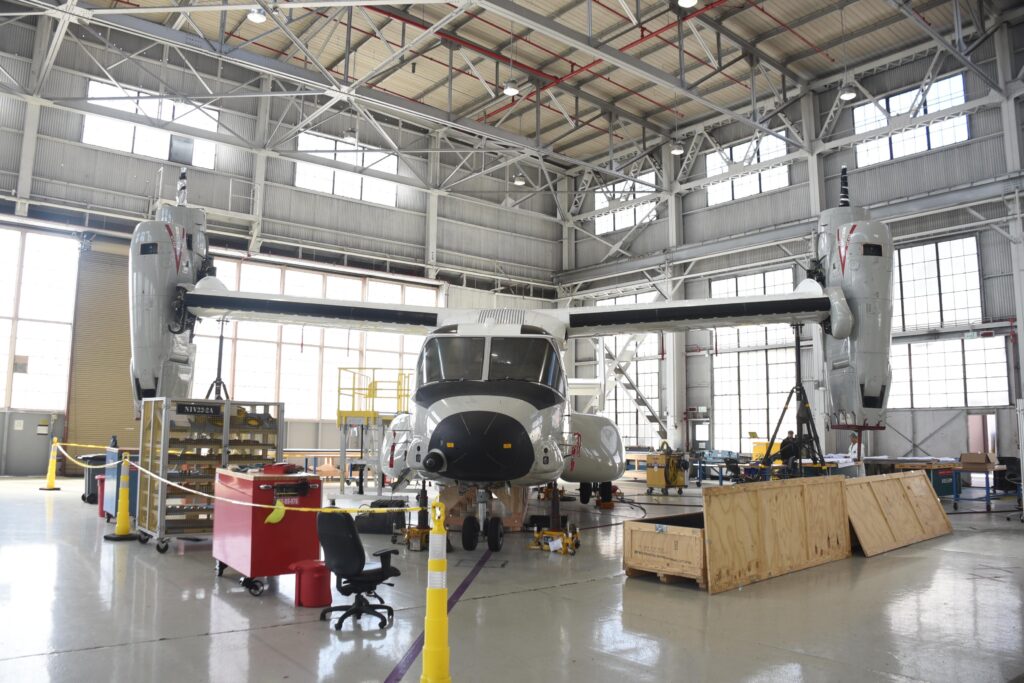
NAVAL AIR STATION NORTH ISLAND, Calif. — Fleet Readiness Center Southwest artisans and the Fleet Support Team recently joined industry partners and the V-22 Joint Program Office (PMA-275) to prevent the loss of an CMV-22 Osprey aircraft which had suffered damage during a mishap, the center said March 8.
The right-hand inner composite skin of the $75 million aircraft sustained a four-foot by two-foot crack with other, but minor, composite damage.
“A lot of people would have said, `Hey, we need to strike this aircraft,’ but the engineers at the FST and our industry partners decided to figure out a way to keep this asset in the fleet,” said Col. Brian Taylor, PMA-275 program manager.
John Sandoval, sheet metal mechanic work lead, said the repair required replacing the inner skin panel.
“We’ve removed over 1,200 fasteners separated by over 42 feet of composite inner skin to composite outer skin,” he said. “This proved to be difficult because this is the first of its kind repair.”
The V-22 is unique to other airframes serviced by the command because of its aluminum, carbon/epoxy composite fuselage and empennage. Its wings and nacelles are also composite and fiberglass.
The aircraft, assigned to Fleet Logistics Multi-Mission Squadron 30 (VRM-30), was inducted by FRCSW on Jan. 13 as an in-service repair, or repairs outside of scheduled maintenance.
“This is the first major ISR and first mishap aircraft my team has performed on a CMV-22,” said Michael Dixon, FRCSW V-22 production manager.
He said the labor-intense repair would require about 70 days and more than 2,800 man-hours to complete, with sheet metal work taking most of those hours.
In addition to four sheet metal mechanics, other artisans needed to ensure a successful repair include electricians, mechanics, quality assurance and planner and estimator personnel. All will work in conjunction with engineering departments from the FST and Boeing.
“These capabilities are what really makes Naval Air Systems Command, the FST and the PMA-275 program so incredibly important to this community because we have the ability to take care of our own stuff and keep these assets in the fight,” Col. Taylor said.
“The planning department estimated the repair will cost $390,500. Currently, we are tracking to complete the repair on schedule and under budget,” Dixon added.
The Osprey will be returned to VRM-30 when complete. In the meantime, a safety investigation relating to the mishap is underway.



